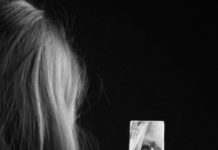Are you familiar with the beauty theory that colors reflect the four seasons—spring, summer, autumn, and winter? Lots of versions have popped up over the years, all with the promise that if you buy the bundle of cosmetics and follow the handy instructions, then voilà—your makeup is now flawless. Or, how about the advice to use certain colors only during certain times of the year?
There are also color palette packages that include every product you could ever possibly need, but of course, they are all in the same color tone. These pledge to finally be the answer to your beauty challenges. But how could this be? Since “all inclusive” beauty packages usually offer four to six color scheme choices, are they really customized just for you?
Let’s consider the unique aspects of our faces which make us appear as individuals. I could not imagine using application techniques with so few color options to achieve a desired look. That would mean that each woman’s facial qualities and components would fit into four to six categories, featuring the same number of respective color schemes.
Makeup is an art, not a paint-by-number project. After all, the goal of wearing makeup is to accent and enhance our features. How could four to six choices possibly suit millions of different-looking women?
The various promises of these ultimate beauty packages simply cannot deliver. Squeezing an unimaginable number of women’s face types into four to six categories is simply impossible. I’ve been asked about these particular beauty programs that come with all the alleged essential tools, and I always say, “Please don’t do it.”
In addition to working on fashion models for magazine shoots during the past twenty five years, I have also maintained a private client base, doing makeup for women like you and me. Between both areas of my work, I have applied makeup to women of all ages, with different types of faces, in order to achieve various desired looks, from casual daytime to evening formal. I have yet to use a pre-planned application approach which comes with pre-selected colors of makeup.
You might now be wondering what the secret formula to flattering makeup is. Since we have nixed wearing makeup in terms of the four seasons, how about matching it to our hair or eye color? Sorry, still not an option. Could we complement our outfit using the same color as our dress? That depends, but not always. Lastly, are there holidays or occasions which represent certain colors that can be integrated into our makeup application? Hmm, not sure how we’d look wearing blue eyeshadow during Chanukah.
Yes, it’s important to consider the occasion or event, your hair color and hairstyle, and the particular design and color of your dress. It is more important, however, to keep in mind your individual comfort level, in order to use your best colors and application techniques. And most importantly is the need to determine the color of your skin’s underlying pigment, referred to as your skin tone.
First, let’s make the distinction between skin color, which has a range of various hues and shades, and “skin tone”, which is either warm, cool or neutral. Skin color is the overall color of the skin as we see it. Skin tone is the underlying pigment that exists in each and every skin color. The three categories of skin tone are:
-
Warm – yellow, orange, or reddish
-
Cool – pink, blue, or violet
-
Neutral – neither warm nor cool
Knowing the color of your skin tone allows the most fitting decisions to be made when purchasing products. A professional and experienced makeup artist can help you determine the color of your skin tone. I guarantee that your newfound awareness will surely result in more satisfying outcomes.
You may be thinking of how learning this significant beauty fact can actually make a difference.
Have you ever noticed someone wearing the perfect shade of pink lipstick? It’s the exact color you’ve been searching for. You become motivated enough to find out the name of the color and brand, then subsequently go out and buy it! The first thing you notice is that it doesn’t look quite like you remember it appearing on the other person, but decide it must be the store’s lighting. Excitedly, you go home and apply the lipstick, but for some strange reason, it still doesn’t look very good on you. What happened?
It could be that your skin tone is yellow and the lipstick color is a warm pink—a mix that doesn’t go well together. To get the most flattering result, you should be complementing your skin tone (like using a cool pink), instead of trying to blend in the lip color, which often results in a muddy outcome. (For a more subdued effect, a neutral pink would also work.)
Another challenge I’ve noticed is in the area of foundation. Yes, your skin color may be light, but your underlying skin tone could be cool, like pink. Knowing that the best foundation color would be in the light family, but your skin tone is yellow, your best bet would be a light foundation with a cool base. A light foundation with a warm base, such as yellow, will leave your face looking unnatural, and in fact, leave a line of demarcation along the jaw line.
Now that we’ve established the importance of knowing the color of your skin tone, planning your beauty regime will be a lot less stressful. I believe this new approach will allow you to make good color choices.
One last piece of advice: when in doubt, go for it! You just never know. Because remember, there are exceptions to every rule.











